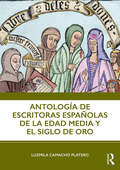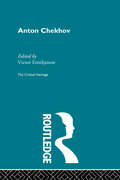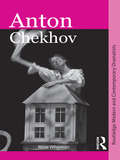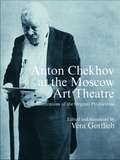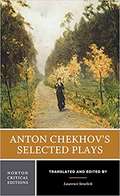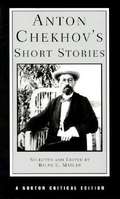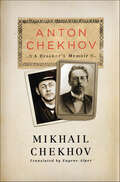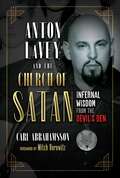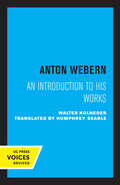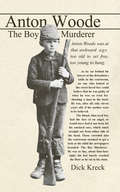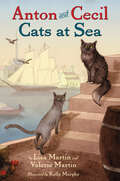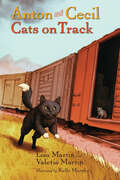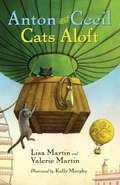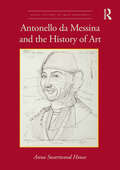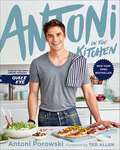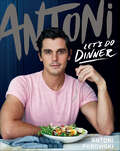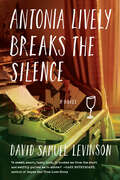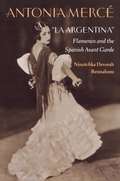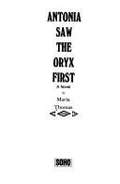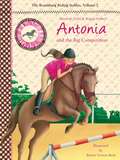- Table View
- List View
Antología de escritoras españolas de la Edad Media y el Siglo de Oro
by Luzmila Camacho Platero; Javier Muñoz-BasolsAntología de escritoras españolas de la Edad Media y el Siglo de Oro ofrece una selección de obras literarias de ocho escritoras medievales, renacentistas y barrocas. Cada capítulo presenta una extensa introducción sobre la autora y su obra. Esta antología contribuye a mejorar el conocimiento de los estudiantes sobre la lengua, la literatura y la cultura españolas, al igual que ofrece una lectura desde la perspectiva de género de estas escritoras. Acompañada de textos originales modernizados al castellano actual, notas aclaratorias, actividades y una extensa y actualizada bibliografía, Antología de escritoras españolas de la Edad Media y el Siglo de Oro muestra la evolución de voces femeninas a lo largo de estos siglos. Las actividades sugeridas para cada capítulo ayudan a exponer y a reflexionar sobre la relevancia cultural que en la actualidad tienen los argumentos que estas mujeres proponent en sus trabajos. Esta antología será de gran utilidad para estudiantes de literatura y cultura españolas de niveles de grado y graduado e, igualmente, para los estudiantes hispanohablantes de literature comparada y de estudios de género.
Anton Chekhov
by Victor EmeljanowThis set comprises forty volumes covering nineteenth and twentieth century European and American authors. These volumes will be available as a complete set, mini boxed sets (by theme) or as individual volumes. This second set compliments the first sixty-eight volume set of Critical Heritage published by Routledge in October 1995.
Anton Chekhov (Routledge Modern and Contemporary Dramatists)
by Rose WhymanAnton Chekhov offers a critical introduction to the plays and productions of this canonical playwright, examining the genius of Chekhov's writing, theatrical representation and dramatic philosophy. Emphasising Chekhov’s continued relevance and his mastery of the tragicomic, Rose Whyman provides an insightful assessment of his life and work. All of Chekhov’s major dramas are analysed, in addition to his vaudevilles, one-act plays and stories. The works are studied in relation to traditional criticism and more recent theoretical and cultural standpoints, including cultural materialism, philosophy and gender studies. Analysis of key historical and recent productions, display the development of the drama, as well as the playwright’s continued appeal. Anton Chekhov provides readers with an accessible comparative study of the relationship between Chekhov's life, work and ideological thought.
Anton Chekhov at the Moscow Art Theatre: Illustrations of the Original Productions
by Vera GottliebThe Moscow Art Theatre is still recognized as having more impact on modern theatre than any company in the world. This lavishly illustrated and beautifully produced facsimile edition of a Russian journal from 1914 documents, photographically, the premieres of all of Anton Chekhov's plays produced by the Moscow Art Theatre, including:*The Seagull, *Three Sisters*Uncle Vanya*Cherry Orchard*Ivanov.Edited by renowned theatre historian Vera Gottlieb, the volume also reproduces - for the first time in an English translation - introductions by Stanislavsky's collaborators Nemirovich-Danchenko and Efros. With 175 unique photographs, this is a significant contribution to our understanding of the origins of today's theatre.
Anton Chekhov's Selected Plays
by Laurence Senelick Anton ChekovAnton Chekhov revolutionized Russian theater through his inimitable portrayals of characters faced with complex moral dilemmas. This Norton Critical Edition includes five of Chekhov’s major plays―Ivanov, The Seagull, Uncle Vanya, Three Sisters, and The Cherry Orchard―and three early one-act farces that inform his later work―The Bear, The Wedding, and The Celebration. Laurence Senelick’s masterful translations closely preserve Chekhov’s singular style―his abundant jokes and literary allusions and his careful use of phrase repetition to bind the plays together. <p><p> "Letters" is the largest collection of Chekhov’s commentary on his plays ever to appear in an English-language edition. <p><p> "Criticism" includes eleven essays by leading European and Russian Chekhov scholars, most appearing in English for the first time, including those by Boris Zingerman, Maria Deppermann, and Lev Shestor. This volume also provides discussion of Chekhov’s plays by some of the twentieth century’s great directors, including Konstantin Stanislavsky, Peter Brook, and Mark Rozovsky. <p><p> A Chronology and Selected Bibliography are also included.
Anton Chekhov's Selected Stories (Norton Critical Editions)
by Anton Chekhov Cathy PopkinFifty-two stories spanning Chekhov’s career. Anton Chekhov’s Selected Stories contains a wide spectrum of classics and new favorites, including “Ward No. 6,” “The Lady with the Little Dog,” “Anna on the Neck,” “The Name-Day Party,” “The Kiss,” An Incident at Law,” and “Elements Most Often Found in Novels, Short Stories, Etc.” This edition features twenty-five brand-new translations, commissioned expressly for this volume from Richard Pevear and Larissa Volokhonsky, Peter Constantine, Rosamund Bartlett, Michael Henry Heim, among others. Twenty translations have been selected from the published work of such master translators as Patrick Miles and Harvey Pitcher, Ann Dunnigan, and Ronald Hingley. Seven additional translations are by Constance Garnett, substantially revised by Cathy Popkin. All stories are annotated to clarify unfamiliar material and to point out differences in the translators’ strategies. "Life and Letters" includes a rich selection of Chekhov’s letters, some in English for the first time, some with previously redacted passages restored, as well as Aileen Kelly’s portrait of Chekhov. “Criticism” explores the wide range of approaches and interpretations in two sections. “Approaches” juxtaposes five different perspectives on how to read Chekhov, represented by Peter Bitsilli, Alexander Chudakov, Robert Louis Jackson, Vladimir Kataev, and Radislav Lapushin. “Interpretations” contains ten divergent readings of stories in this edition. Case studies include Michael Finke on “At Sea”; Cathy Popkin on “[A Nervous] Breakdown”; Julie de Sherbinin on “Peasant Women”; Liza Knapp on “Ward No. 6”; Robert Louis Jackson on “Rothschild’s Fiddle” and “The Student”; Wolf Schmid on “The Student”; John Freedman on “Man in a Case,” “Gooseberries,” and “About Love”; Caryl Emerson on “A Calamity,” “Anna on the Neck,” “About Love,” and “The Lady with the Little Dog”; and Rufus Mathewson on “The Lady with the Little Dog” and “The Beauties.” A Chronology and Selected Bibliography are included, as is a postscript on the translators and their work. A special section, “Comparison Translations,” gives passages from selected stories in multiple translations.
Anton Chekhov's Short Stories
by Anton Chekhov Ralph E. MatlawA selection that gives the general picture of Chekhov's work that reflects his major concerns, techniques, and attitudes, and includes most of his best and most popular stories, selections from Chekhov's Letters and criticism.
Anton Chekhov: A Brother's Memoir
by Mikhail ChekhovIn a style reminiscent of Anton Chekhov himself--realistic, intimate, and dynamic--Mikhail Chekhov shares unparalleled memories and insights, transporting readers into the world of the Chekhov family. He visits the places where his brother lived and worked and introduces the people he knew and loved, Leo Tolstoy and Piotr Tchaikovsky among them. As a unique eyewitness to the beloved writer's formative years and his artistic maturity, Mikhail Chekhov shows here first-hand the events that inspired the plots for The Seagull, The Black Monk, and The Steppe, among other enduring works. Captivating, surprising, and a joy to read, this memoir reveals the remarkable life of one the most masterful storytellers of our time.
Anton Chekhov: Selected Stories
by Anton Chekhov Ann DunniganThis collection of Chekhov's stories show his variety of styles and tones. Some of his stories are humorous, farcical, optimistic, and lively, while others are pessimistic, displaying the cruelty, greed, stupidity, and unbearable sadness of life. Many of the stories show his social consciousness and desire to make the world a better place in which to live. According to Simmons who wrote the Forward to this collection, Chekhov's chief aim in his stories, might have been to portray the reality of life for as Chekhov wrote in his notebook "Man will become better only when you make him see what he is like."
Anton LaVey and the Church of Satan: Infernal Wisdom from the Devil's Den
by Carl Abrahamsson• Includes never-before-published material from LaVey, including transcripts from his never-released &“Hail Satan!&” video • Shares in-depth interviews with intimate friends and collaborators, including LaVey&’s partner Blanche Barton, his son Xerxes LaVey, and current heads of the Church of Satan Peter Gilmore and Peggy Nadramia • Provides inside accounts of the Church of Satan and activities at the Black House, personal stories and anecdotes from the very colorful life of the Black Pope, and firsthand explanations of key principles of LaVey&’s philosophy With his creation of the infamous Church of Satan in 1966 and his bestselling book The Satanic Bible in 1969, Anton Szandor LaVey (1930-1997) became a controversial celebrity who basked in the attention and even made a successful career out of it. But who was Anton LaVey behind the public persona that so easily provoked Christians and others intolerant of his views? One of privileged few who spent time with the &“Black Pope&” in the last decade of his life, Carl Abrahamsson met Anton LaVey in 1989, sparking an &“infernally&” empowering friendship. In this book Abrahamsson explores what LaVey was really about, where he came from, and how he shaped the esoteric landscape of the 1960s. The author shares in-depth interviews with the notorious Satanist&’s intimate friends and collaborators, including LaVey&’s partner Blanche Barton, his son Xerxes LaVey, current heads of the Church of Satan Peter Gilmore and Peggy Nadramia, occult filmmaker Kenneth Anger, LaVey&’s personal secretary Margie Bauer, film collector Jack Stevenson, and film historian Jim Morton. Abrahamsson also shares never-before-published material from LaVey himself, including discussions between LaVey and Genesis P-Orridge and transcripts from LaVey&’s never-released &“Hail Satan!&” video. Providing inside accounts of the Church of Satan and activities at the Black House, this intimate exploration of Anton LaVey reveals his ongoing role in the history of culture and magic.
Anton Marty and Contemporary Philosophy (History of Analytic Philosophy)
by Giuliano Bacigalupo Hélène LeblancThis edited collection of eight original essays pursues the aim of bringing the spotlight back on Anton Marty. It does so by having leading figures in the contemporary debate confront themselves with Marty’s most significative contributions, which span from philosophy of mind, philosophy of language and ontology to meta-metaphysics and meta-philosophy. <P><P> The book is divided in three parts. The first part is dedicated to themes in philosophy of language, which were at the centre of Marty’s philosophical thinking throughout his life. The second part focuses on the problem of the objectivity and phenomenology of time and space, upon which Marty was working in the final years of his life. The final part turns to Marty’s meta-metaphysical and meta-philosophical considerations. The intended audience of this book are primarily scholars and students interested in the relevant contemporary debates, as well as scholars working on the Austrian tradition.
Anton Webern: A Research and Information Guide (Routledge Music Bibliographies)
by Darin HoskissonAnton Webern: A Research and Information Guide offers carefully selected and annotated sources regarding Webern from 1975 to present day, including sources on Webern’s life, his music, and the interpretation and reception of his music. Along with this comprehensive annotated listing of print and online sources, the book discusses the history of research on Webern and includes a brief chronology of his life. It is a major reference tool for those interested in Webern and his music and valuable for researchers of 20th century music and the Second Viennese School.
Anton Webern: An Introduction to His Works
by Walter KolnederThis title is part of UC Press's Voices Revived program, which commemorates University of California Press’s mission to seek out and cultivate the brightest minds and give them voice, reach, and impact. Drawing on a backlist dating to 1893, Voices Revived makes high-quality, peer-reviewed scholarship accessible once again using print-on-demand technology. This title was originally published in 1968.
Anton Woode
by Dick KreckA tale of juvenile crime, focusing on one incident in 1892, a murder by a young child. The murder itself is secondary; the main focus is how this act by an 11-year-old shaped the lives of the people involved.
Anton and Cecil, Book 1: Cats at Sea (Anton and Cecil #1)
by Valerie Martin Lisa MartinA swashbuckling story of two very different cat brothers and their adventures at sea. Anton and Cecil are as different as port and starboard. Cecil, stocky and black with white patches, thirsts for seafaring adventure. Slim, gray Anton prefers listening to the sailors’ shanties at the town saloon. One day when Anton goes to the harbor, he’s taken as a ratter on a ship bound for the high seas. Cecil boards another ship in hopes of finding Anton. What begins as a rescue mission turns into a pair of high-seas adventures. Anton takes on a fierce rat, outwits hungry birds, and forges a forbidden friendship, while Cecil meets dolphins and whales and finds himself in a pirate raid. On an ocean as vast as the one Anton and Cecil have discovered, will they ever see home--or each other--again? Includes a sneak peek at the next adventure in the series, Anton and Cecil: Cats on Track.
Anton and Cecil, Book 2: Cats on Track (Anton and Cecil #2)
by Valerie Martin Kelly Murphy Lisa MartinTerrible news has reached cat brothers Anton and Cecil: their rodent friend Hieronymus has been captured. Anton and Cecil must set out to rescue the mouse who once saved Anton’s life. Boarding one of the monstrous machines the mice call “landships,” the brothers travel to the Wild West. Along the way Cecil is tossed out onto the prairie by the train’s conductor only to face bison, prairie dogs, and a boy who would make him a pet. Meanwhile, Anton meets a ferret friend who warns of stampeding herds, rattlesnakes, and fierce, enormous cats. Facing such danger can Anton and Cecil find the courage and wit to save Hieronymus?
Anton and Cecil, Book 3: Cats Aloft (Anton and Cecil #3)
by Valerie Martin Kelly Murphy Lisa MartinTuckered out from a journey across the Wild West, cat brothers Anton and Cecil are ready to head east for home--until a minor stop to change trains in Chicago turns into a major adventure. A bloodhound detective recruits the brothers to help solve a case: puppies are disappearing right off their leashes! Anton and Cecil’s search takes them deep into the heart of the 1893 Chicago World’s Fair, where they befriend exotic animals, ride the newly invented Ferris Wheel, and look for clues amid the crowds of fairgoers. Just as they close in on the culprit, Cecil is carried away in a giant flying balloon and Anton is left behind. Can the cat brothers find the puppies and each other in this big, busy city? Fans of classic animal adventures such as A Cricket in Times Square and Poppy will love Anton and Cecil’s world, brimming with action and rich, true-to-life detail.
Antonello da Messina and the History of Art (Visual Culture in Early Modernity)
by Anna Swartwood HouseThis book argues that painter Antonello da Messina (c. 1430–1479) is a formative cross-cultural figure in the practice of art history itself.Featuring new interpretations of some of his best-known works, Anna Swartwood House shows how the uncertainties surrounding the painter have made him a uniquely pliable figure, easily inserted into different narratives of contact, cultural translation, and exchange. Using a wide range of materials including archival documents, biographies, civic histories, collectors’ notes, and popular literature, House traces the fortunes of an artist continually defined by place.The book will be of interest to scholars working in art history, Renaissance studies, early modern history, and historiography.
Antoni in the Kitchen
by Antoni PorowskiNEW YORK TIMES BESTSELLER!*One of Food & Wine’s Essential New Cookbooks for Fall**One of Eater's Best Fall Cookbooks 2019**One of Amazon's Best Cookbooks for Fall 2020*"Antoni has a love of food equal to my own. From his Johnny's Queso Blanco (you can never go wrong with melted cheese) to his Polish Hangover Soup (I'm sure this will come in very handy) and all of his desserts, I can't wait to explore the mind and creativity of this extremely hot chef."—Chrissy TeigenAntoni Porowski, the food and wine guru on Netflix's sensation Queer Eye, meets people where they live—literally. With appealing vulnerability, he shows cooks of all levels how to become more confident and casual in the kitchen. The verve and naturalness of his approach earned raves from Food & Wine and Bon Appétit to GQ and the New York Times, which noted his dishes prove that “sometimes simple is anything but simplistic.”Some of the recipes in this book are weeknight healthyish meals, while others are perfect for off-the-cuff entertaining. Elevated yet simple, they’re often composed of fewer than five ingredients. Whether Bastardized Easy Ramen; Malaysian Chili Shrimp; Roasted Carrots with Carrot-Top Pesto; or Salty Lemon Squares, all are visual stunners and can be carried off with panache, even by beginners.
Antoni: Let's Do Dinner
by Antoni PorowskiIn the follow-up to his New York Times bestseller Antoni in the Kitchen, Queer Eye star Antoni Porowski shares exuberantly easy dinners for every night of the weekLet&’s Do Dinner is an invitation into Antoni&’s easy kitchen. Dinner with Antoni means satisfying meals full of clean protein and loads of vegetables, with splurges of carbs and decadence. Simple, yes, but always special. Antoni keeps shopping lists short and steps and pans to a minimum. Pulled chicken nachos, pasta carbonara with scallions and peas, or pan-seared steak with harissa butter and crispy potatoes—it&’s all good for post-work evenings or casual entertaining. Antoni shows how to crank the flavor, make exciting suppers from pantry staples, create new takes on classics by swapping in one surprising ingredient, and build a rousingly flavored vegan grain bowl. Plus, he lets you in on the secret weapons in every kitchen that get great food on the table fast.
Antonia Lively Breaks the Silence: A Novel
by David Samuel LevinsonCatherine Strayed is living a quiet, un?remarkable life in a secluded college town following the mysterious death of her husband, a promising writer whose death may have been an accident, a suicide, or perhaps even a murder. When her former mentor (and onetime lover)—a powerful critic who singlehandedly destroyed her late husband’s chance for success—takes a teaching job at the college, Catherine’s world threatens to collapse. For with him has come his latest protégé, an exotic young woman named Antonia Lively. Antonia’s debut novel has become a literary sensation—but it is, in fact, an almost factual retelling of ?a terrible crime that she relates without ?any concern for the impact its publication will have on the lives of those involved. As Antonia insinuates herself into Catherine’s life, mysterious and frightening things start to happen, because unbeknownst to Catherine, the younger woman intends to plunder her own dark, regrettable past—and the unsolved death of her husband—for her next literary triumph. Provocative and cunning, Antonia Lively Breaks the Silence asserts that fiction is never truly fictional and asks, What does stealing another’s life do to your soul? Levinson spins a tale of surprises, peeling back one revelation only to find another in this tightly wrought, wickedly cynical look at the worlds of academia, publishing, and celebrity.
Antonia Mercé, “LaArgentina”: Flamenco and the Spanish Avant Garde
by Ninotchka BennahumAntonia Mercé, stage-named La Argentina, was the most celebrated Spanish dancer of the early 20th century. Her intensive musical and theatrical collaborations with members of the Spanish vanguard -- Manuel de Falla, Frederico García Lorca, Enrique Granados, Néstor de la Torre, Joaquín Nín, and with renowned Andalusian Gypsy dancers -- reflect her importance as an artistic symbol for contemporary Spain and its cultural history. When she died in 1936, newspapers around the world mourned the passing of the "Flamenco Pavlova."
Antonia Saw the Oryx First
by Maria ThomasAntonia Redmond, the child of American parents, grew up in Tanzania. After studying medicine in the US, she has returned to work in a small hospital in Africa. When she meets a young African woman, Esther Moro, who seems to have the power to heal through touch, Antonia begins to question her ideas about science and medicine. The novel interweaves the lives of these two powerful women against the backdrop of a continent shaken by political upheaval yet still rooted in tradition.
Antonia and the Big Competition: The Rosenburg Riding Stables, Volume 2
by Betina Gotzen-Beek Elisabeth Zöller Brigitte KollochAntonia's greatest love is riding horses. So it's no surprise that her dream is to become a successful show jumper. But when her riding instructor presents an opportunity for Antonia to realize her dream by entering her for a big show-jumping competition, Antonia's courage seems to fail her. After all, not only is Antonia the youngest entrant in the competition, but Elfin Dance, the wild gelding she rides, sometimes has a mind of his own. To make matters worse, Alina-Antonia's antagonist who never misses an opportunity to best her-is entering the competition, too. Does Antonia even stand a chance?A story of perseverance told by Elisabeth Zöller and Brigitte Kolloch, featuring the colorful illustrations of Betina Gotzen-Beek, Antonia and the Big Competition encourages girls to overcome their fears and obstacles in this second book in an exciting new horse series for young readers aged 7 to 10. Readers will learn how to follow their dreams and problem solve by following Antonia's example. The confident and level-headed Antonia is a great role model for young girls and parents will want to continue buying books in this new series as their children strive to be more empowered and a good leader.
